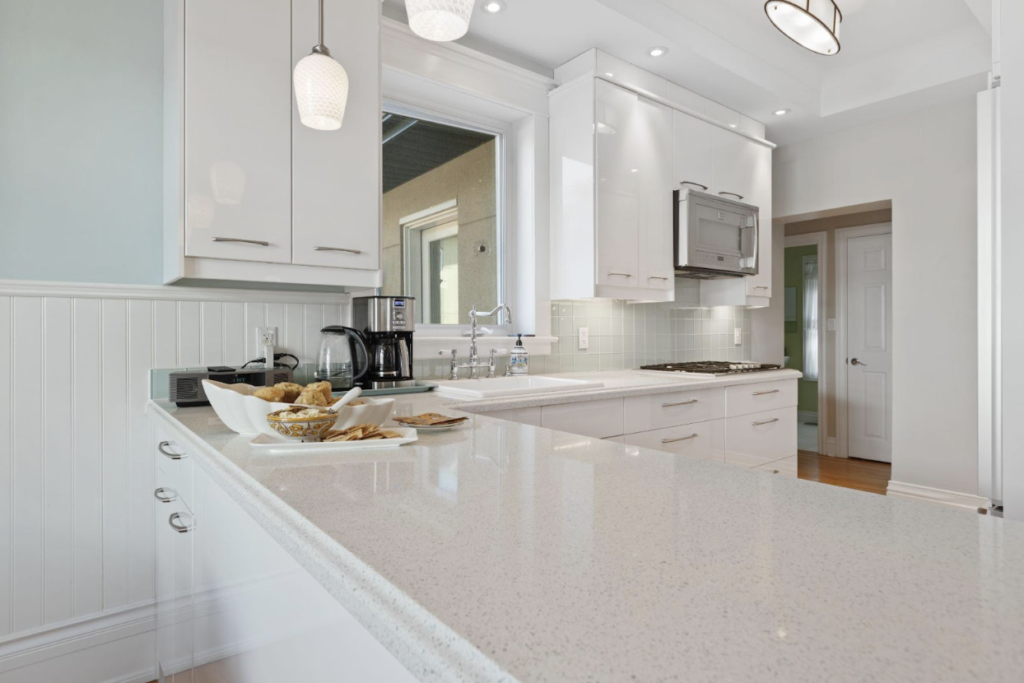
People love quartz countertops for plenty of reasons: they’re durable, attractive, and incredibly long lasting. Investing in the best quartz countertops is never a bad idea.
Quartz also comes in all sorts of designs, patterns, and colorations. Since it’s a man-made product, you’ll often find more variety than you would in a natural stone.
Beyond that, quartz is super easy to clean because it’s nonporous. That also means it doesn’t ever have to be sealed.
In this article, we’ll dive deep into just what quartz is made out of—so if you’ve been consistently looking for “quartz countertops near me,” you’ve come to the right place.
Quartz: A Man-Made Material
Quartz countertops can be confusing. We say that they’re man-made, but isn’t quartz a mineral that comes from the earth? Both statements can be true, and we’ll explain why.
Quartz is actually one of the most abundant minerals on the planet, and it scores high on the Mohs Scale of Hardness (which means it’s very hard). But that’s not to say quartz countertops are made from natural quartz alone. Unlike granite countertops, which are made of pure granite, quartz countertops include additives as well—and that qualifies them as engineered stones.
Keep reading to learn more about the process of how they’re made.
Quartz Countertops: What’s Inside?
There are a few steps that go into converting quartz crystals into the countertop slabs that you’re familiar with. Let’s break those steps down.
Step 1: Creating the mix
While quartz countertops aren’t 100 percent quartz, they are mostly quartz—sitting anywhere between 90 and 94 percent. This amount of quartz is ground up and combined with polymers, resins, pigments, and sometimes crushed pieces of other minerals and even mirrors. The polymers and resins bind the particles together, and the pigments are there for color.
Step 2: Molding the shape
After the mixture is done, it creates a material that feels similar to wet sand. That wet sand-like material is then poured into a mold and distributed evenly to create a perfectly flat slab.
Step 3: Putting on the pressure
In order to create a solid material out of this mixture, it needs extreme pressure. This extreme pressure also ensures the nonporous nature of quartz countertops, along with their rock-hard exterior. When the mixture is compressed, all of the ingredients bind together, and vacuums are used so the process remains airtight and the compression is absolute—with no air pockets to speak of.
Step 4: Turning up the heat
The quartz slabs are then dried and heated at very high temperatures to ensure the hardness of the final product.
Step 5: The final touches
The final touches involve polishing the quartz slabs after they’ve cooled down from the heating process. This makes the surface shiny and gives it that gorgeous, sparkling look that you love.
All about Quartz Countertops
At Wallstone Stone Countertops, you can expect to find the best quartz countertop installers right here on our team. We know all about quartz and the work that goes into creating it, and we’d love to help you implement this gorgeous stone into your kitchen.
For a hygienic, easy-to-clean, easy-to-maintain, beautiful engineered stone, get in touch with Wallstone Stone Countertops for the best quartz countertops you can find.
